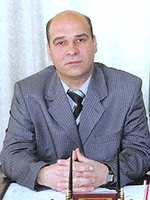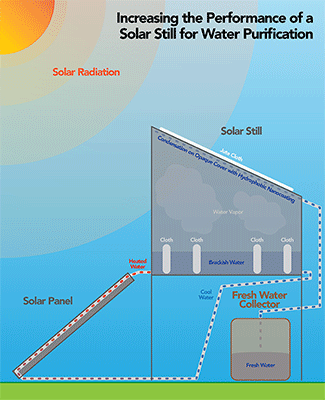Fulbright Visiting Scholar Dr. Amer Mamkagh Aims to Increase the Performance of a Solar Still for Water Purification in Jordan

Dr. Amer Mamkagh is no stranger to the heat and dry temperatures that dominate the summers in Lubbock. However, he had never visited Texas before this spring.
Mamkagh is a professor in the Department of Plant Production in the Faculty of Agriculture at Mu'tah University in Karak, Jordan. He holds Bachelor of Science, Master of Science, and Doctor of Philosophy degrees in mechanical engineering and the mechanization of agriculture from Kabardina-Balkarian Agricultural State Academy in Nalchik, Russia.
In his native Jordan, Mamkagh teaches and conducts research on agricultural equipment and mechanization, farm operations, the application of solar energy in farming, water desalination, and food engineering.
Much like West Texas, the climate in Jordan is hot and dry, and quality drinking water is not easy to find. Most places in Jordan receive less rainfall than West Texas, and underground water sources are brackish and not suitable for drinking. "Jordan is one of the poorest countries in the world, in terms of freshwater availability," says Mamkagh. "The climate in Jordan and Texas is similar, but we have more sun in Jordan."

Mamkagh came to Texas Tech in February 2013 for nine months as a part of the Fulbright Visiting Scholar Program to work on improving a solution that will address the scarcity of fresh water with the benefits of abundant solar energy.
The device he hopes to improve, a solar still, uses solar energy to create fresh water without the need for external power sources. This simple and relatively cheap device consists of two main components, a solar panel and a basin-type solar still with an opaque cover. The panel is filled with pipes, and as the water travels through pipes, the solar radiation slowly raises the temperature above the temperature of the outside air. The water then travels into the still, where it evaporates and eventually condensates on the inside of the opaque cover. The fresh condensate then runs down and can be collected.
"To enhance the productivity of the still, we will improve the cooling of the cover by adding natural jute fiber cloth, keeping the area wet and promoting condensation," explains Mamkagh. "Secondly, we will increase the evaporation area by adding another cloth on the inside of the still, within the basin. This will lead to more vapors and more condensation. Finally, we will coat the inside of the cover with a hydrophobic nanocoating, which will increase the productivity."
Through these methods, Mamkagh hopes to increase the productivity of the still by forty to fifty percent, all while keeping the cost of the device as low as possible. If he is able to improve the efficiency of the device, he will be able to produce approximately 20 liters (5.25 gallons) of fresh water per day per device. The goal is to produce a device that can be sold for less than $400, a large investment for a small farming family, but one that could provide essential water in a simple device.
Edward E. Whitacre Jr. College of Engineering
-
Address
100 Engineering Center Box 43103 Lubbock, Texas 79409-3103 -
Phone
806.742.3451 -
Email
webmaster.coe@ttu.edu
